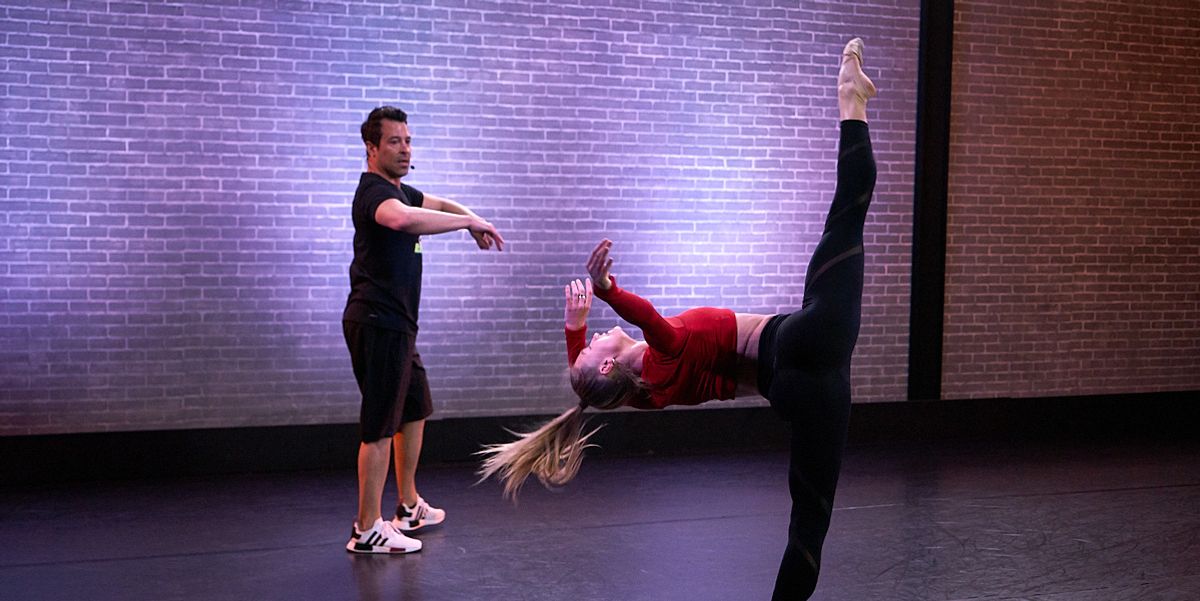Are Online Dance Classes Here to Stay?
In the time between COVID-19’s first worrisome appearance in the U.S. and, for many, months of shelter-in-place orders, dancers and teachers alike found their opinions of online learning shifting: from outright resistance, initially, to begrudging acceptance, to—for some—actual enthusiasm. Choreographer and University of Illinois associate professor Abby Zbikowski likens that attitude shift to the stages of grief. “First, we all went through a stage of numbness: ‘We’ll be able to bounce out of this,’ ‘I just have to sustain this small amount of time teaching online,’ ” says Zbikowski. “Coming around to acceptance meant realizing we’re going to have to learn to live with this thing for a while. People don’t want to fight it anymore—there’s a little bit of relief.”
Jon Arpino, co-founder and CEO of CLI Studios, an online-class platform with popular teachers like tWitch, Allison Holker and Brian Friedman, thinks this shift in attitude is due only partly to necessity—it’s also due to its effectiveness. “The speed at which everybody moved online and the world didn’t fall apart speaks to the fact that online learning does work,” he says.
For educators like Zbikowski, it’s an opportunity to flex their creative muscles. “I’m not in love with it,” she says, “but it is presenting new challenges. How do you keep dancers fully dimensional and in their bodies through this two-dimensional medium? I’m still in the process of figuring that out.”

Focus Record, Courtesy Festival Un Pas Vers L’Avant
No one is arguing, of course, that remote learning can permanently take the place of in-person education. “I’ve always called online learning supplemental, even pre-COVID,” says Arpino. There are clear drawbacks to online classes, too: Few dancers have the necessary space in their homes for full-bodied movement, and jumps of any kind on unsprung flooring can quickly lead to injury. Novice dancers are more prone to injury in general, without someone there to identify and correct alignment issues. The lack of an in-person connection with a teacher, as well as the opportunity to receive hands-on corrections, is a loss for dancers at all levels.
But remote learning has also come with its own benefits, like more equitable accessibility. “It’s allowed for the recognition that not everybody is coming from the luxury of dancing in a studio their whole lives,” says Zbikowski. “That’s not the only way people dance or innovate or train or learn, and this is broadening conversations around that.”
Arpino touts remote learning’s ability to reach larger populations, of both longtime dancers and those new to dance. “Distance learning makes the barrier of entry to trying something new so much lower,” he says. “It can expose you to 10 or 20 times more teachers than you would have otherwise.”
That positivity toward online-only dancing seems to be the dominant attitude, at least for now. “The benefit of this happening is that there will be this sort of backup generator—a supplemental one—operating in the background,” says Arpino. “So when you, say, have a snow day, or if COVID comes back in a smaller way, you’re ready for the transition to distance learning.”
Regardless, Zbikowski says that the emotional and physical grit gained from this experience won’t be going anywhere. “I’ll welcome that mental toughness in the studio,” she says, “whenever we can reassemble again as a community.”




